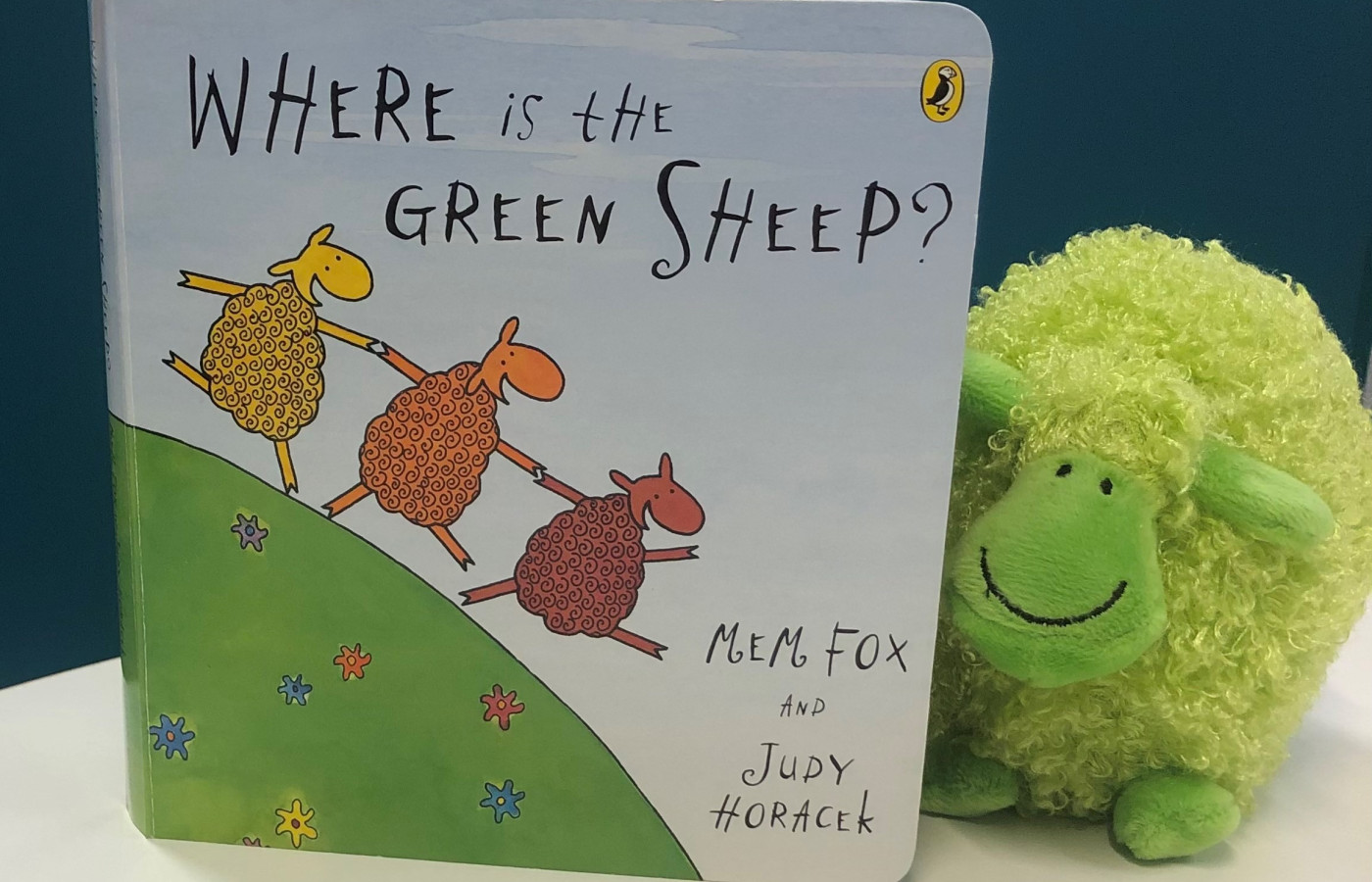"Where is the Green Sheep?" book experience

"Where is the Green Sheep?" book experience
Sharing the story and matching colours to household items
Materials Required
- Book "Where is the Green Sheep?" by Mem Fox
- Paper, scissors, sticky tape, paddle pop sticks (or any kind of stick) and coloured pencils/crayons/textas
Play experience profile
-
Ages:
-
Min Playtime15 - 30 Minutes
-
Skills
-
Energy LevelActive play
-
Messiness Rating
-
EYLF Outcomes
Play Experience Preparation
Have the story "Where is the Green Sheep?" by Mem Fox or have the attached YouTube video link - Prepare materialsExperience Steps
- Read "Where is the Green Sheep?" by Mem Fox or watch the attached YouTube video.
- Talk about what each of the sheep are doing in the story.
- Explore concepts such as near and far within the story.
- Invite your child to represent (draw) the sheep and support them to attach these drawings to a stick to create a puppet.
- Go on a treasure hunt to find things the same colour as the sheep in the story.
- Use your sheep stick puppets to find items in your house or garden that match these coloured sheep e.g. a red hat for the red sheep, blue shoes for the blue sheep.

What to talk about, or questions to ask during the experience
- Can you see the red sheep?
- What is the bath sheep doing?
- Where is the green sheep?
- What is the bed sheep doing?
- Where is the up sheep?
- Where could that green sheep be? Encourage your child to predict/guess
- Can you find the same colour as the sheep somewhere?
Build on this...
- Investigate concepts of thin and wide, up and down, far and near.
- Investigate different weather conditions - sun, rain, snow, wind etc.
- Investigate different types of transport - cars, trains, ships, airplanes, motorbikes etc.
WHO guidelines for physical activity and sedentary behaviour
Provide evidence-based public health recommendations for children, adolescents and adults on physical activity.
Learn more
Provide evidence-based public health recommendations for children, adolescents and adults on physical activity. Learn more
Walking around your house or garden finding coloured items that match the sheep is being physically active.
EYLF Outcomes
The Early Years Learning Framework has been designed for use by early childhood educators working in partnership with families, children’s first and most influential educators.
View PDF
The Early Years Learning Framework has been designed for use by early childhood educators working in partnership with families, children’s first and most influential educators. View PDF
- Children feel safe, secure, and supported
- Children develop a range of skills and processes such as problem solving, inquiry, experimentation, hypothesising, researching and investigating
- Children transfer and adapt what they have learned from one context to another
EYLF Principle
Principle 1: Secure, respectful and reciprocal relationships. Through a widening network of secure relationships, children develop confidence and feel respected and valued.
EYLF Practice
Practice: Intentional teaching. Intentional teaching is deliberate, purposeful and thoughtful. They use strategies such as modelling and demonstrating, open questioning, speculating, explaining, engaging in shared thinking and problem solving to extend children’s thinking and learning.
https://www.playgroupnsw.org.au/ParentResources/PlayActivities/GreenSheepstickpuppets
https://www.youtube.com/watch?v=2h4zAxrLgMQ Link to a video of the book being read
https://www.earlystartdiscoveryspace.edu.au/discovery-at-home/?_sf_s=story Link to more shared book experiences by Early Start Discovery Space educators
https://storyboxlibrary.com.au/
Author:


